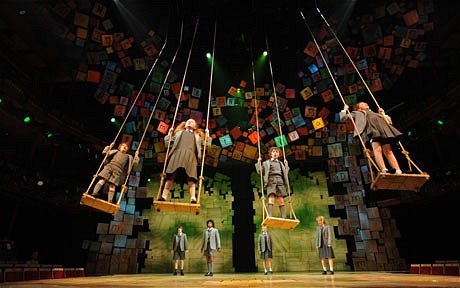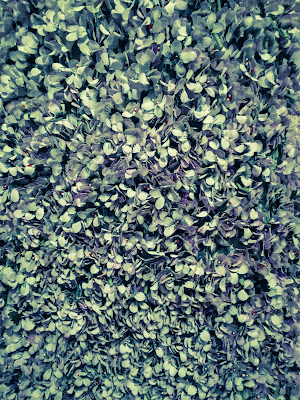Looking through my notes (I keep notes of nearly everything, as I'm sure has become apparent by now), I find that I only saw 23 plays this year in six cities. That's not many for me, but it's still pretty hard to whittle it down to a top five.
I shall start by saying that I am not including anything in which I was involved whether on or off stage. That cancels out a number of productions for Canberra Repertory, which were very good including Witness for the Prosecution, Macbeth, and She Stoops to Conquer, and also Vinegar Tom for COUP: Canberra. Because it is very hard to separate the rest then, I shall list them in alphabetical order.
 |
| Antigone, Sport for Jove |
5 Best Productions I Saw in 2016:
- Antigone – Sport for Jove, Canberra Theatre Centre
This is an outstanding example of how to modernise a classic. Damien Ryan's adaptation of Sophocles' Greek drama is contemporary and pertinent while losing none of the dramatic relevance. From family grief to civil war and the aching need to just make it all stop and face a brighter future; it's all here in this tight, compelling tale. The set calls to mind Aleppo; the humour (yes, humour) invokes modern sit-coms, and the political speechifying will be familiar to all. Andrea Demitriades in the titular role and William Zappa as Creon are superb performers and mine their conflict to its ultimate depths, but Greek drama is always supported by a chorus, and this ensemble is terrific. I loved it. - King Lear – Sydney Theatre Company, Roslyn Packer Theatre
Of course it's going to be all about Geoffrey Rush as he plays Shakespeare's tragic king driven to madness. But the rest of the cast provide perfect foils as the ruthless politics become personal embodied in the actions of the daughters and their consorts; exposed with rueful poignancy by Robyn Nevin's Fool. The Dover Cliff scene is sensational as Edgar (Mark Leonard Winter) leads his beloved father, Gloucester (Max Cullen) to the edge. There's nothing happy in this play, and director Niel Armfield leaves us emotionally exhausted and utterly spent. This is cathartic theatre at its very best. - Matilda the Musical – The Royal Shakespeare Company, Princess
Theatre, Melbourne
For someone who doesn't really like musicals or children (especially singing ones), but who loves Roald Dahl and Tim Minchin, this was always doing to be a close call. I'm happy to report that the pros (and they are most certainly pros in all senses of the word) substantially outweigh the cons. The acting is excellent, with the adults hitting all the comedy notes and the kids bringing the pathos. The songs are great (I was still singing All I Know I Learned from Tele several months later), even if a few of the lyrics are hard to discern in the children's harmonies. And the production values are sublime - that disappearing cake and the school gate/ building blocks sequence are spectacular. - Tales from a City by the Sea – VCE Drama, La Mama Courtyard, Melbourne This powerful and moving drama focusses on love and life in the Gaza Strip. In some ways, with its war-torn lovers and family interventions, this is a modern Romeo and Juliet. It has all the hallmarks of that classic story - duty to family and tribe set against personal fufilfment and hopeless situations - but it is set against the real experiences of people living under occupation. There are tough choices to be made when Jomana, a Palestinian woman living in a Gaza refugee camp, falls in love with Rami, an American-born Palestinian humanitarian doctor. The simple staging of a white sheet is cleverly used to conceal and reveal, while the actors remain on stage watching the action in which they do not participate: when war affects individuals (and it always does) - we are all complicit whether or not we want to be.
- Uncle Vanya – Canberra Repertory Society, Theatre 3
One of the things I dislike most in theatre is when directors take over the text, trying so hard to put their own stamp on the play that they lose the original intent. Geoffrey Borny allows his actors to bring out the nuances in Chekov's great work in such a way that makes them seem fresh and new.The family lead dull and boring lives. They eat and drink and sleep, and follow a rigid routine of sandwiches and samovars, and are immensely unsettled when this banal schedule is interrupted. The aesthetics of this life are beautiful (from the set and staging to the costumes and props) but empty. It is left to the servants to provide the depth, and the richest images are drawn from the land; those who do the physical labour are the true heart of the country. Passing passions are fleeting but solid foundations will endure. As a doctor and an activist, Chekov understood the importance of substance over artifice; as a director, Geoffrey Borny does too.
 |
| Matilda, The Musical, Royal Shakespeare Company |
- Miss Bronte - Bravo Theatre, Queenbeyan Performing Arts Centre Mel Dodge embodies the restless spirit of Charlotte Bronte and her struggle with conformity in a sensitive and soulful one-woman play directed by Lyndee-Jane Rutherford.
- Mother - If Theatre, Queenbeyan Performing Arts Centre Noni Hazlehurst controls the stage flawlessly and pleas for empathy in the powerful one-woman poetic drama about an ordinary person who ends up homeless due to set of depressing circumstances.
- Playhouse Creatures – Pigeonhole Theatre, Queenbeyan Performing Arts Centre It's such a pleasure to see this great play about women in the seventeenth-century theatre of the Merry Monarch brought to the stage with energy and conviction.
- Shakespeare's Greatest Hits - Vol. 400 - Remarkable Theatre, Queenstown Botanical Gardens Local actors provide promenade theatre in a beautiful setting for some great excerpts of the bard's best bits, which brings back a lot of memories from previous performances.






















































